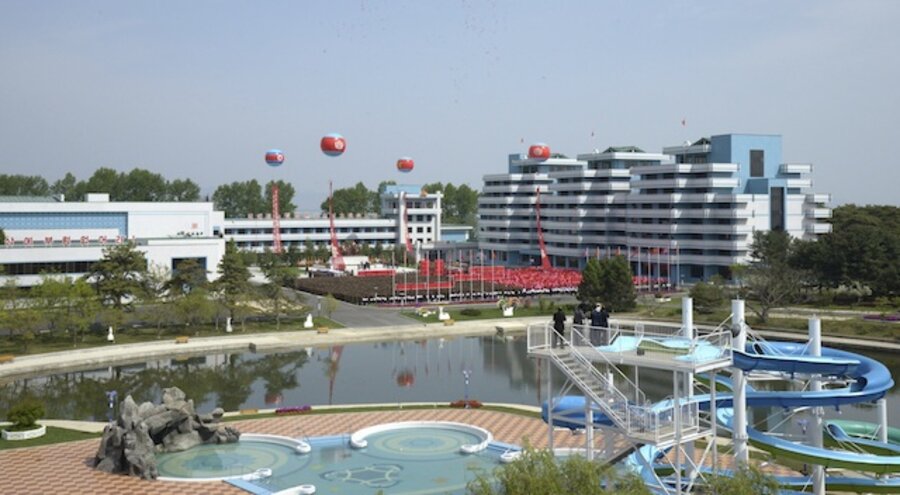Next stop Pyongyang? Check your North Korea travel app
Loading...
| Seoul, South Korea
For everyone who secretly dreams of traveling to North Korea, there's a new app for that.
Despite the fact that few Western tourists ever make it to North Korea, the app aims to be the most comprehensive travel guide ever released for the so-called "hermit kingdom." So just what can an adventurous traveler do in North Korea, and is it safe and ethical to visit?
The app is called NorthKoreaTravel and is produced by Uniquely.Travel, a London-based start-up that specializes in difficult to access travel destinations. The app is being sold for 99 cents in the iTunes store starting Wednesday.
Using the app, prospective visitors can select North Korean cities, towns, and sites they’re interested in visiting to create their own itinerary. Six different travel companies can then bid on that person’s trip and offer their services.
The app is filled with hundreds of original photos of around 350 destinations in North Korea, with maps based on satellite images. The grim aesthetics of North Korea are illustrated in some of the possible destinations, including brutalist-looking apartment blocks, factories, and ports.
Nicholas Bonner, director of Koryo Tours, a Beijing-based company involved in NorthKoreaTravel, says prospective visitors should be made aware of the conditions in North Korea before deciding to go there. “Some people are interested in a sunrise, somewhere like Thailand. This ain’t that,” he says.
Despite its bombastic threats, North Korea is alluring to many as a destination that has refused to enter the modern world. The difficulty in accessing the country means that few Westerners ever make it there. North Korea does not release official data on the number of Western tourists it receives, but estimates range from 4,000 to 6,000 per year. Most of the foreign tourists that travel to North Korea are Chinese.
NorthKoreaTravel project manager Chad O’Carroll says the development of the app was motivated more by the widespread fascination with North Korea than by concrete growth in the number of Westerners who make the trip. “A lot of the people who will be interested in this are armchair travelers who won’t actually go there,” he says.
To visit North Korea, Western tourists must be taken by an accredited travel agency and are always accompanied by North Korean guides. Most of the country is still off limits.
While NorthKoreaTravel refers to the North as an exceptionally “unique” country, it is also often described as one of the world’s most repressive places, a state with an abysmal human rights record. A 372-page United Nations Commission of Inquiry report on human rights in North Korea released in February described a litany of abuses and called the North Korean regime a human rights abuser “that does not have any parallel in the contemporary world.”
A portion of the travel fees for North Korea tours (packages range from about $2,000 to $2,500 at Koryo Tours) goes to the North Korean government, raising criticism that travelers are paying a government that spends millions on nuclear weapons and monuments praising its leaders, but still has a population where many lack proper nutrition or access to basic health care.
In its promotional materials for the app, NorthKoreaTravel commissioned an essay from North Korea expert and Seoul-based Kookmin University professor Andrei Lankov, who argues that tourism to North Korea does more good than harm by providing North Koreans the rare chance to observe foreigners for themselves, outside the lens of the state’s official propaganda.
Mr. Bonner argues that the small number of visitors who travel to the North don't bring enough money to have a discernible impact on North Korea's fortunes. "Does tourism prop up the regime? Do the math – it's such a small number, it couldn't in any way have any influence."






